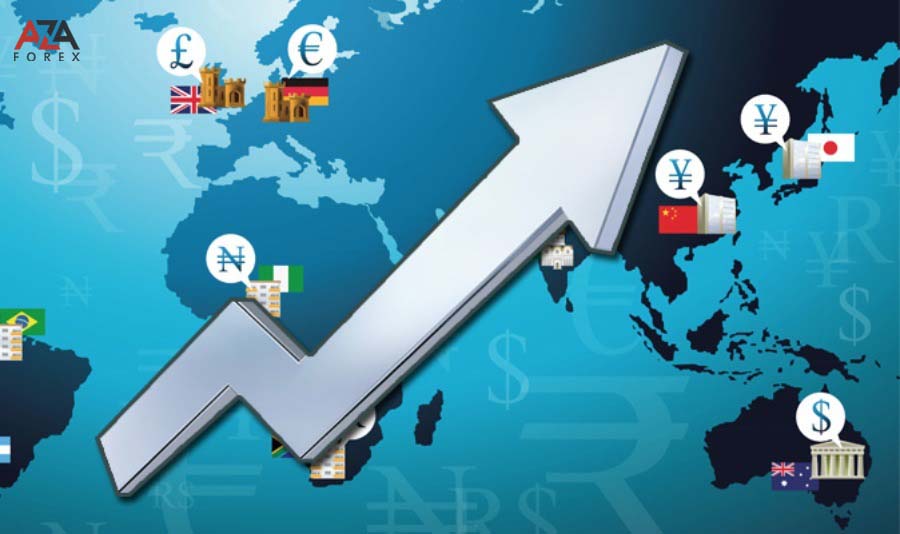Trading on the international forex market attracts many potential traders and just Internet users. Trade opens a lot of opportunities, shows how to grow and develop, to become strong and independent.
But before you start trading on the market, every novice trader should do a great job on himself and his emotions, get all the necessary knowledge, acquire new skills and skills.
At the Forex exchange, exchange rates are constantly monitored by market participants - investors and traders. To get the desired result in the form of profit, it is important for any beginning speculator to analyze and assess the market situation, while capturing large amounts of data and relevant news, learning to predict the possible development of events on the market, linking how the event affects the value of currencies and other tools that the trader actively uses in his work. All these aspects are integral to the formation of the trading process, along with drawing up a plan, we choose a trading strategy or market tactic to further establish an efficient and working system. Adhering to such rules and following the system, any novice player will be able to reduce potential trading risks and, consequently, increase his chances of success in the transactions. And it would seem, there is nothing complicated, at first glance, opening a position - a deal to buy, and in the period of falling prices (for the instruments of interest) and expect growth in the value of the selected asset, and accordingly open a deal for the sale of this asset. To obtain the desired income. But do not forget about the fact that the direct task of a currency trader is to correctly adjust your trading and organize the process of trading in such a way that the return, that is, the profit, was the maximum, and the transactions, respectively, effective and successful.
Therefore, it is logical that the trader needs to correctly and maximally qualitatively learn to think analytically, should be able to competently analyze the situation on the market, to create an accurate price forecast of the price behaviour, the chosen trading instrument. Also, focusing on mani management, and methods of money management, the player calculates the trade balance and establishes possible risks. Such science as an analyst plays a key role in the formation of a qualitative and effective trading process. What is required from a member of the exchange? First of all, constantly monitor the current quotes, be aware of many, and not only stably used in their work. And do not forget about correlations and quotations of correlating tools. The presence of direct and inverse correlation has not been cancelled. Thus, possession of valuable knowledge, and correctly applying the data obtained, the trader can learn to create the most accurate predictions of the price behaviour in the selected asset, thereby substantially increasing the initial result of the trading operation. In reality, many methods provide the opportunity to predict the change in the behaviour of a currency pair, but it is really difficult to get the most accurate and effective forecast. There are the 4 most relevant options for forecasting exchange rates: 1) The theory of purchasing power parity - PPP The basic principle of PPP is based on the law of one price - the theoretical model, which implies the fact that identical goods in different states should have identical (equal) cost. Based on the theory of PPP, we can state that the exchange rate is changing so that it can compensate for price growth due to inflation. Proceeding from this, it is possible to predict and calculate the inflationary difference. For example, prices in the US are expected to increase by 5%, and in Canada by only 3%. Based on these indicators, we calculate the inflation differential: 5% -3% = 2% The received value tells us that the dynamics of price increases in the US will be faster than in Canada. Proceeding from this law, the US dollar should fall by 2% (depreciate) so that the prices of goods in the countries become identical (as close as possible). 2) the principle of relative economic stability As a basis, we take the rates of economic growth for different countries, and this indicator allows us to forecast the movement of the exchange rate. Logically, a steadily developing economic climate and high growth rates, as a rule, attract foreign investments. This involves the purchase of a national currency - the demand rises, and the currency rises in price. This methodology provides an opportunity to obtain data on investment flows, analyze the dependence of interest rates and attract investors. The only drawback is that this principle can not foresee the size of the exchange rate. It mostly just helps to better understand the direction of the currency movement (strengthening or weakness), and also get an idea of such an indicator as to the strength of the pulse. Using this method in combination with others, we can get an effective result. 3) creation of an economic model This is one of the popular methods for predicting the exchange rate. Building a model that is the link between the exchange rate of a particular currency and other factors affecting its movement. For this, the data and the values of their economic theory are used. But in the calculations, use those variables that strongly affect the exchange rate. This is a rather difficult way to predict: but if we have a ready-made model, we can apply all the data and easily get quick forecasts, if you want, by substituting new data. 4) time series analysis This is a purely technical approach - we use the moving average model. The past behaviour of the price and model is successfully applied for future forecasts for the selected pairs. The program processes the data - time series and creates its model. Forecasting exchange rates is not an easy task. The ability to develop in all influencing factors and analyze quantities is the number one task for any successful trader.


























